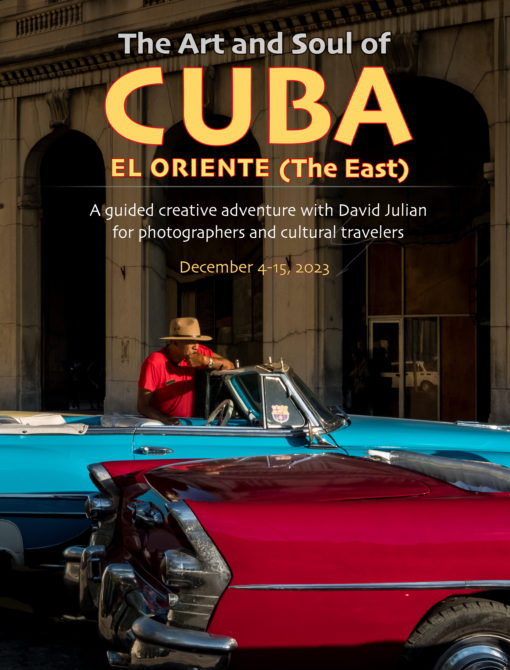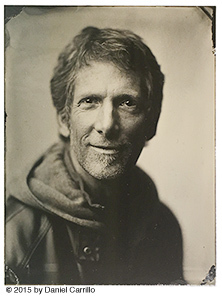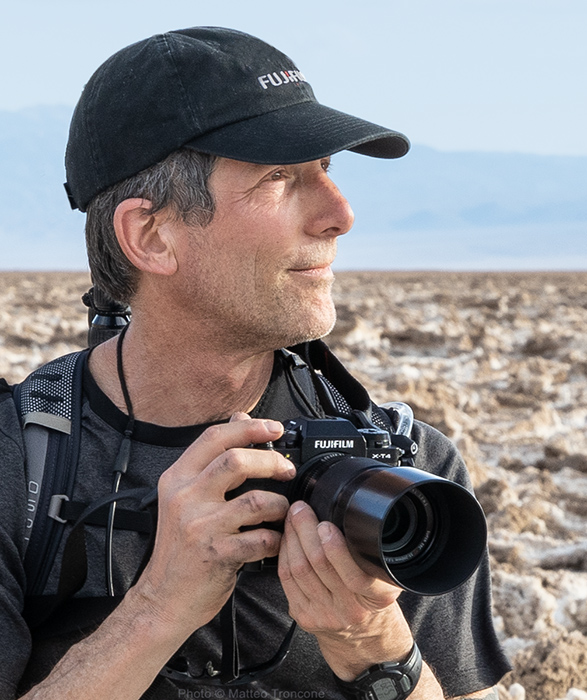I’d been wanting to visit Cuba for decades, but it had somehow evaded my priorities.
Then a call came in with an invitation to fly to Cuba and contribute to the documentary project
In the Footsteps of Walker Evans. I didn’t need many details. I signed on without hesitation. Since then I return annually and bring photographers like you. But here’s my story…
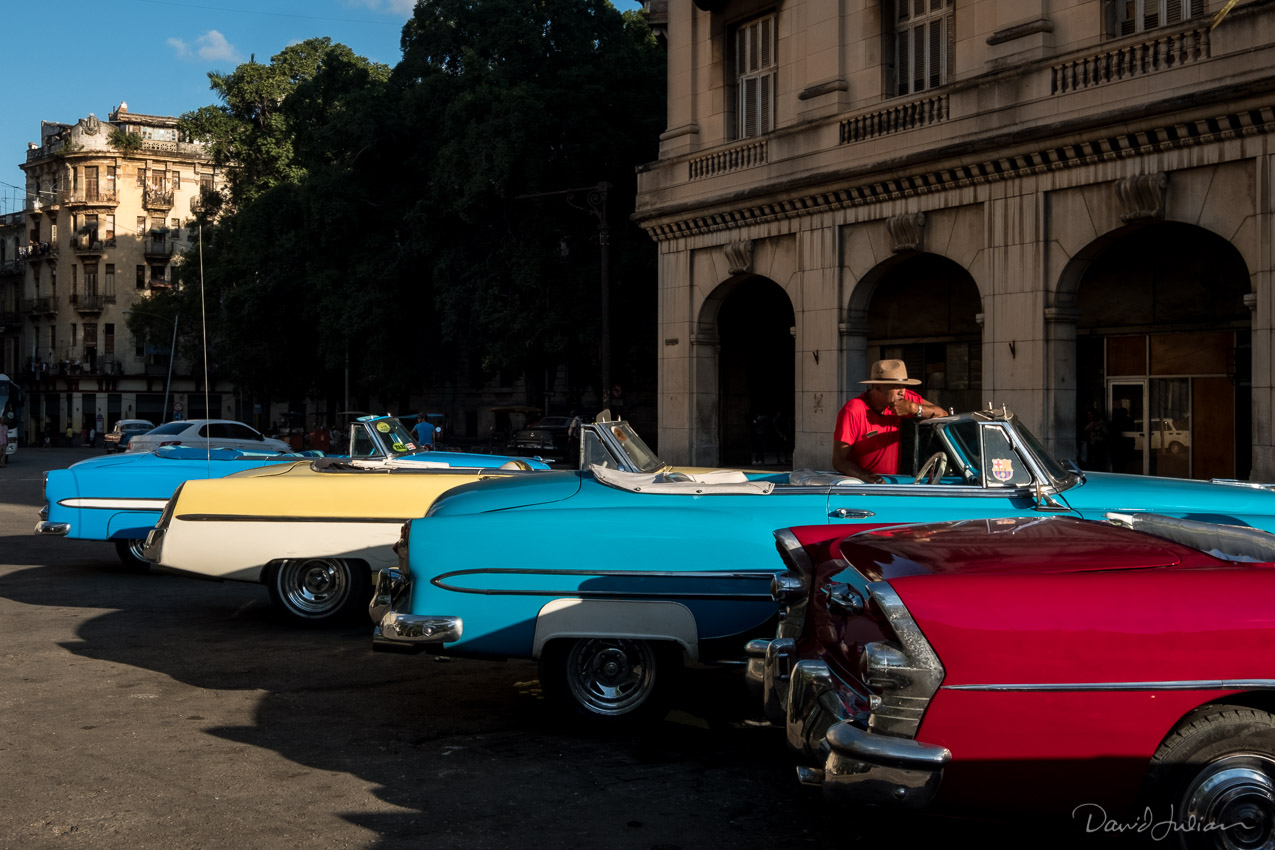
Classic Cars in Afternoon Light, Havana
My first visit to Cuba:
Our objective was to photograph contemporary Western Cuba where the renown American photographer Evans had worked in 1933. We would meet with Cuban photographers, and with their guidance, interpret modern Cuba in our own style. Though we were on a heavily structured itinerary covering vibrant Havana, verdant Viñales and colonial Trinidad, I was able to steal away every day to pair off or shoot on my own. I had no idea that I would fall in love with Cuba, and return again annually to share this passion with other photographers. Here’s why Cuba caught my heart:
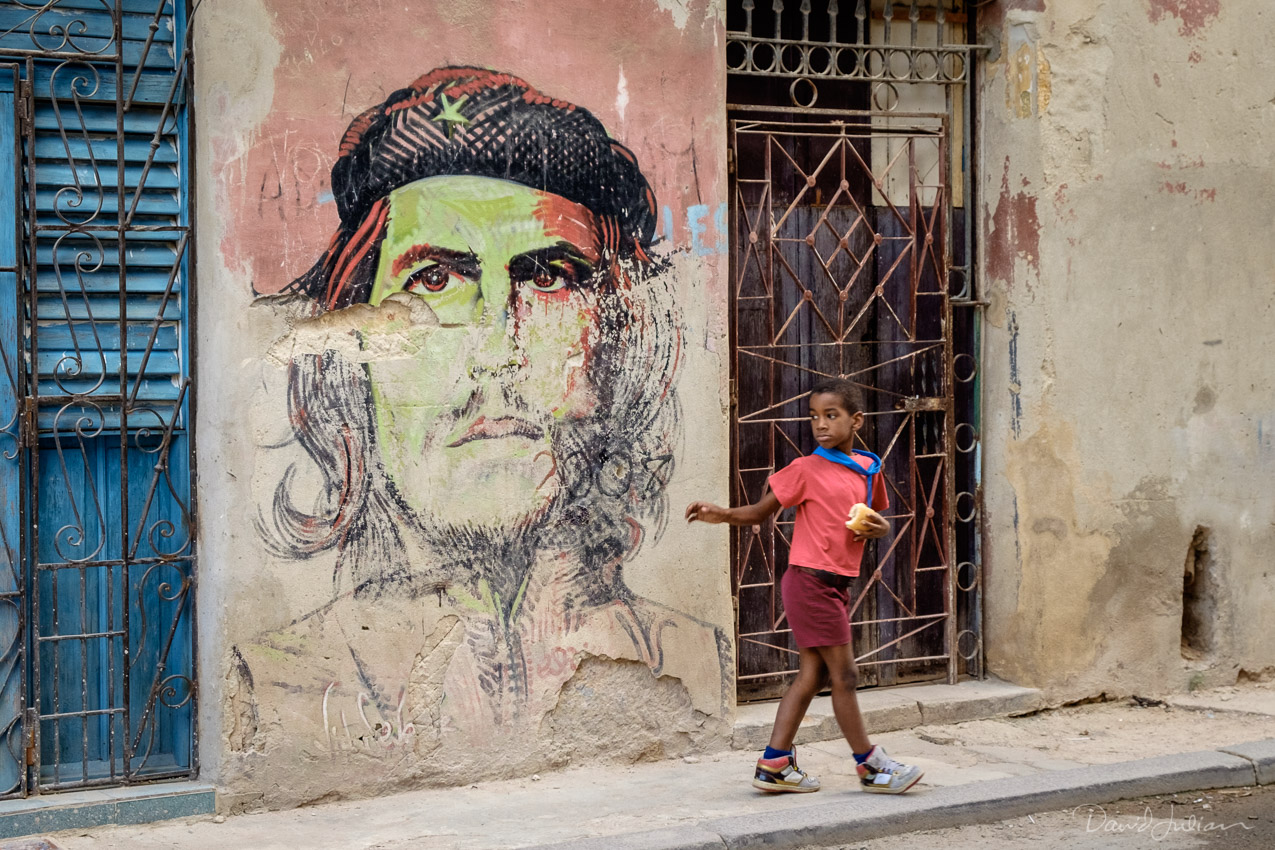
Boy and Ché, Havana
I studied up on this historic island nation, it’s ethnic makeup, socio-political history and it’s legacy of significant contributions to art and music. I looked forward to responding to the rhythms of Cuba while learning to work the light in the busy streets of Havana and outlying regions. I also knew I’d be blown away with all the classic 50’s cars there. I researched the work of modern Cuban photographers, such as Raul Cañibano, Arien ‘Chang’ Castan, Jorge Gavilondo and several others. As I was then relatively new to the art of street photography, I wanted to practice my graphic composition while capturing fleeting moments with a decisive eye.
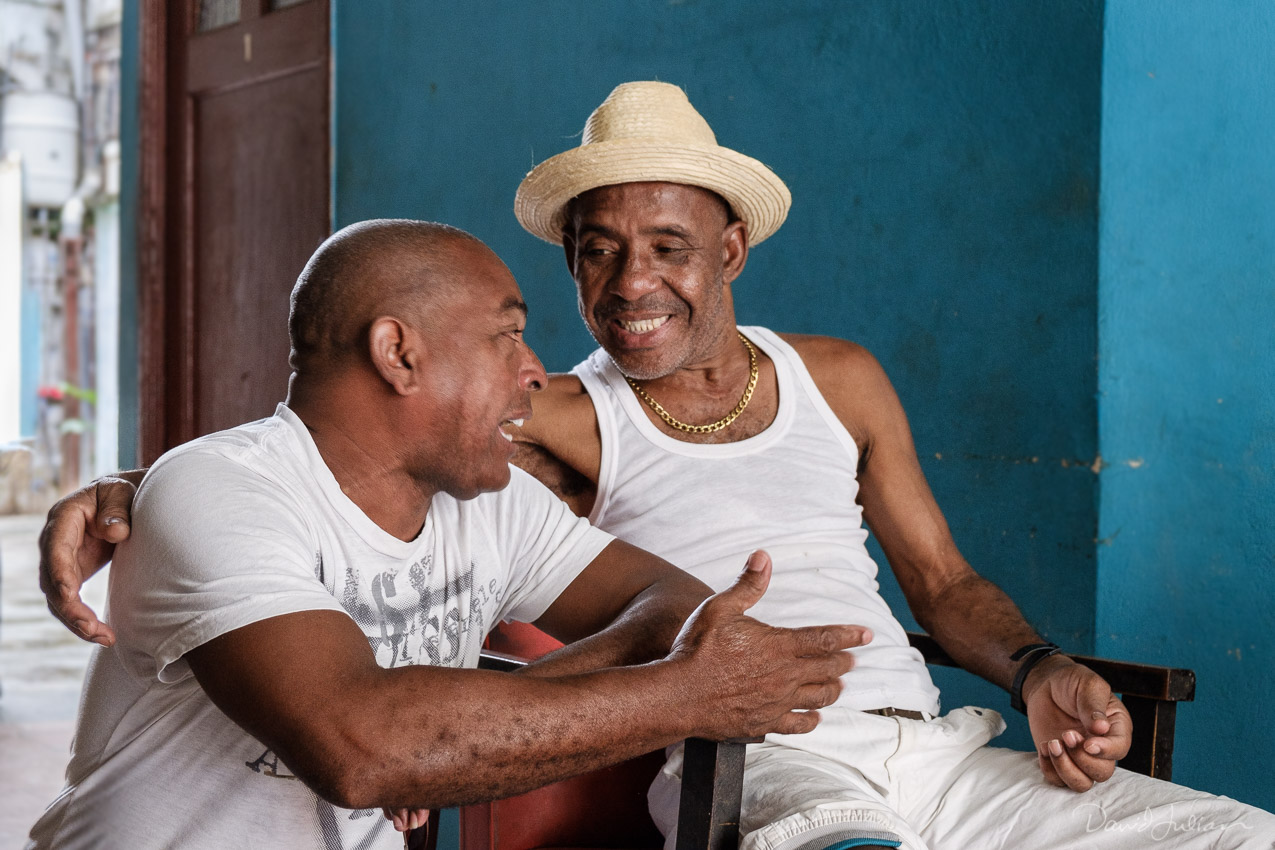
William the Painter and Friend, Havana
Welcome to The Emerald Isle…
Within a few hours of touch down, I walk the streets to acclimate to the local rhythm. It’s tempting to begin shooting right off, but I first tune in to the sensory layers of the city: hammering, dog barking, color, cooking, peeling textures, faces, curiosity, salt air, engines, exhaust, and always muy rapido Español. I then feel more relaxed and adaptive, and my reaction time to spontaneity improves. With it’s long bayside Malecon, Havana is relatively easy to navigate, so walking is easy and bicycle taxis are ready to rescue tired feet. Now after several trips, I can access to a deeper side of Havana, beyond tourist areas where most tours focus. The classic 1950’s cars are everywhere, from pristine to patched-up jalopies. They provide an sense of place in street shots, and also a stylish way to get around town with a Cuban driver guide. While that is a must-do in Cuba, I’m on foot most of the time so I can slow down, tune into opportunities and find spontaneous situations to shoot.
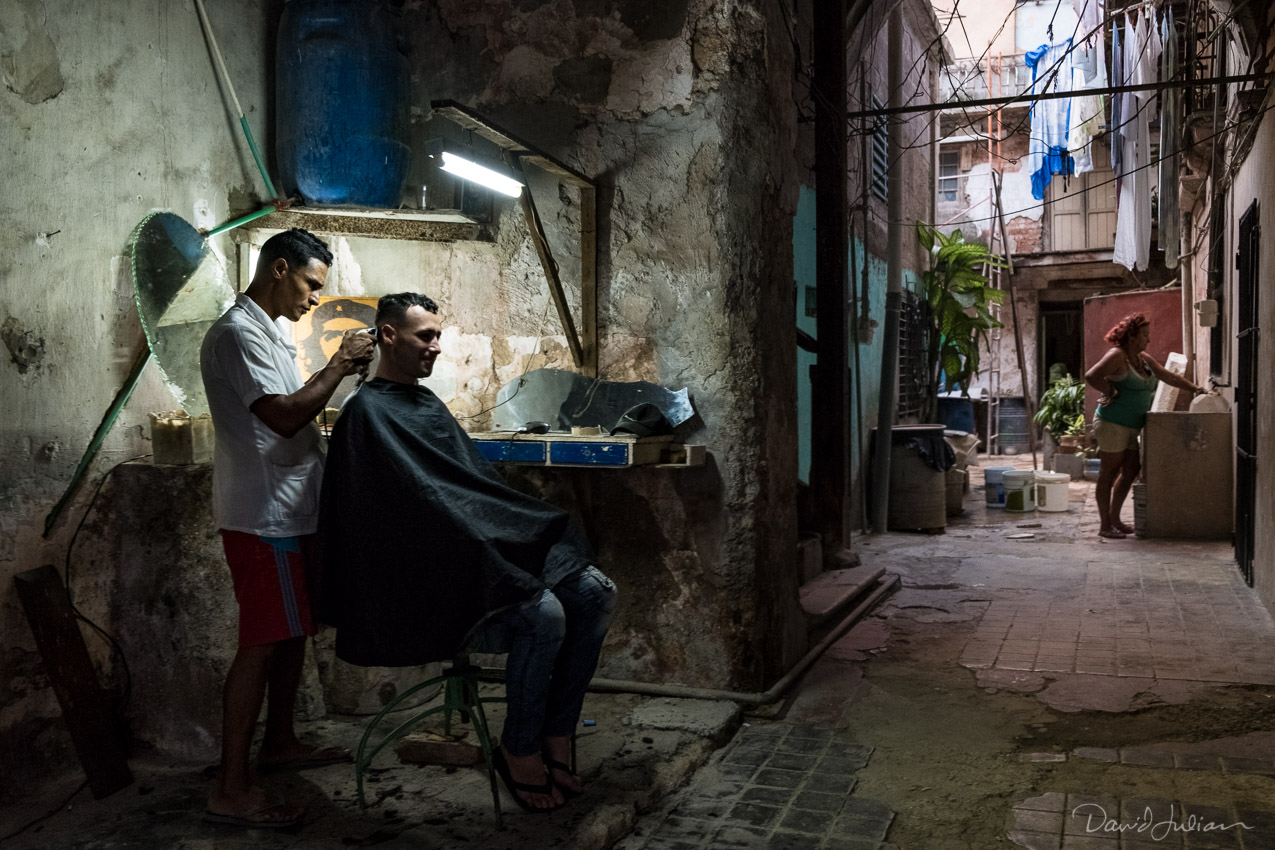
One of Cuba’s most visible art forms, barbering is seen in every possible location, formal or improvised.
Cuba is About People
The roots of African and Spanish blood make Cubans some of the most culturally interesting (and photogenic) people I’ve ever met. Though not fluent in Spanish, I connect through simple conversations rather than ‘shoot and scoot’ as I see many visitors doing. Once you’ve been to Cuba, you’ll agree that Cubans are warm, creative, hard-working and proud. Meeting artists, musicians, vendors, families and joyfully unsupervised kids is all in a day’s walk. Almost every Cuban claims to have a relative living in the States. Now that public WiFi is common in Cuban cities, and streaming internet is accessible, its now common to see people lit by cell phones lining streets or park benches. It’s an unusual mix of the old and the new, and Old Havana is getting newer looking every month. The time to visit is later this year, as Cuba has done a stellar job to protect citizens and tourists against the spread of Covid.
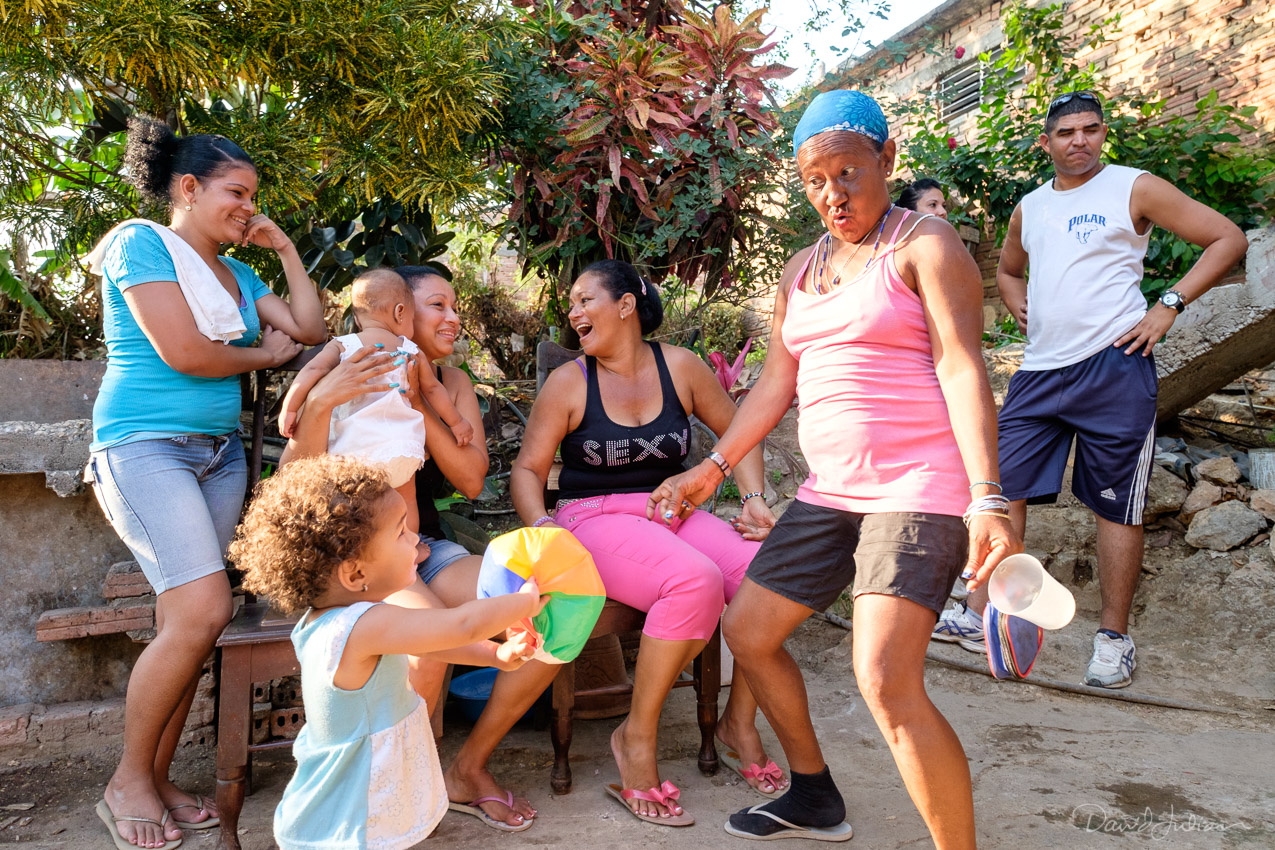
70th Birthday Fiesta, Trinidad
Exploring the Light
There is no doubt that without interesting light on a subject, a photograph has less power. While traveling, I seek long shadows, raking light and rich colors in late afternoon. I also do early outings to seek out ephemeral light and a town awakening with few tourists around. When the sun is high above, I seek out shadows, and the reflected light that illuminates doorways and interiors.
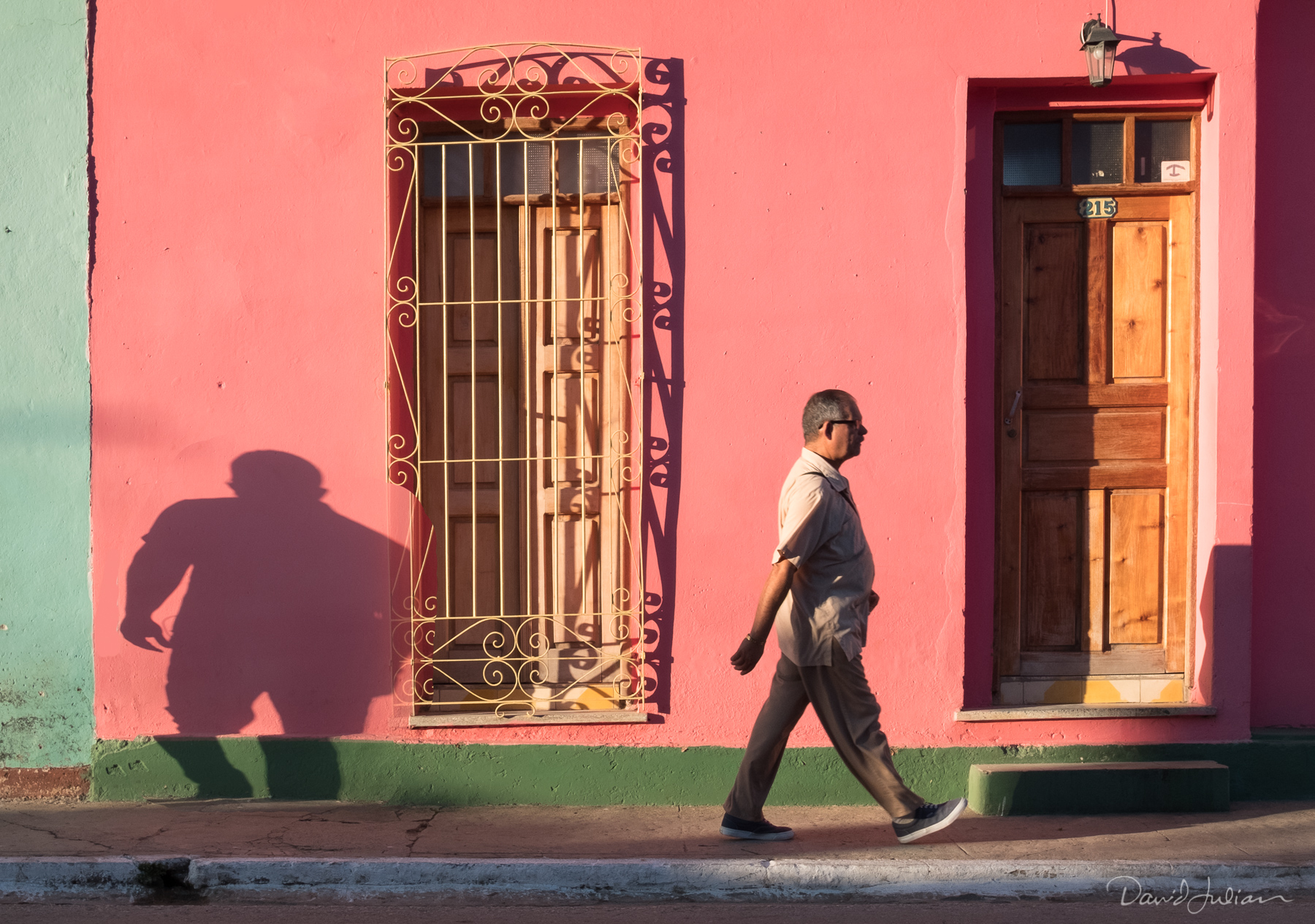
Early morning or late afternoon is Shadow Time, a quest of prediction, timing and luck.
When it clouds over, I can capture portraits more easily without overly-contrasty bright sun and dense shadows. I’m one of those people who love when it rains in the city. I like the muted colors, spattered reflections and shiny streets. My Fuji X cameras and most of the lenses I use are weather resistant, so I don’t worry about a little rain.
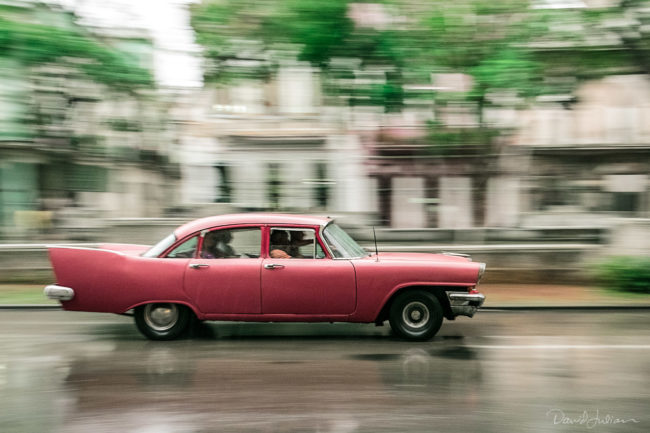
Heading Home, Havana
Seeing in B&W, Shooting in Color
While Cuba is certainly about color, I also like the vintage feel of B&W photographs. With mirrorless cameras one has the option of setting the camera to ’see’ in B&W right in the viewfinder. This is a unique ability in mirrorless cameras, somewhat like Live View mode in dSLRs, but right within the viewfinder. I love several of the Fujifilm film simulations, especially the B+W Acros settings. Fujifilm Acros was one of my favorite B&W films back before digital. Each year, I compile a book of my best photographs from the trip and publish a small bound book to bring the following year. These and prints from them are my gift to the Cubans who helped me feel welcome in their island home.
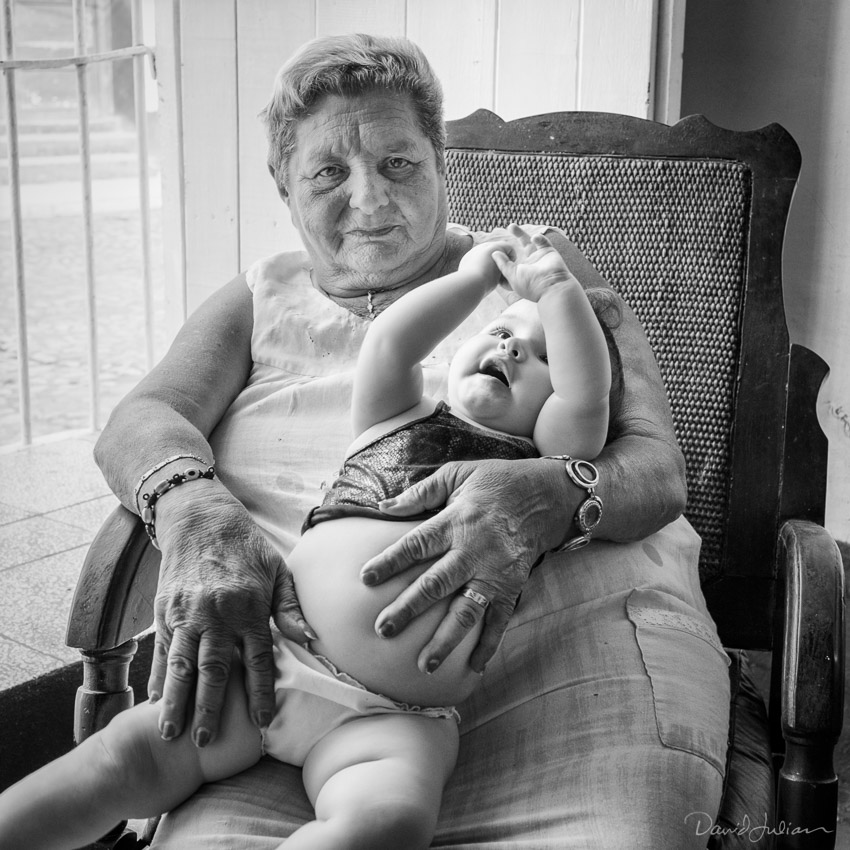
Dolores with Grandson, Trinidad
This year makes my seventh annual trip to Cuba! This time we spend more time in the rich street and arts culture of Havana, and include a trip to verdant Viñales in the Pinar Del Rio valley with stops in between. Whether you’re a photographer or casual cultural traveler, I invite you to join us there this December 5th! The itinerary is awesome and we’ve still got a few spots left as of this writing. Learn all the details at: artandsoulofcuba.com
Just fill in the blanks to subscribe for more travel stories and techniques in Photography, Lightroom and Photoshop.
I occasionally send out "The Viewfinder" e-newsletter, and provide free presets and workshop discounts.
I never over-post, share your info, and you can opt out at any time.

